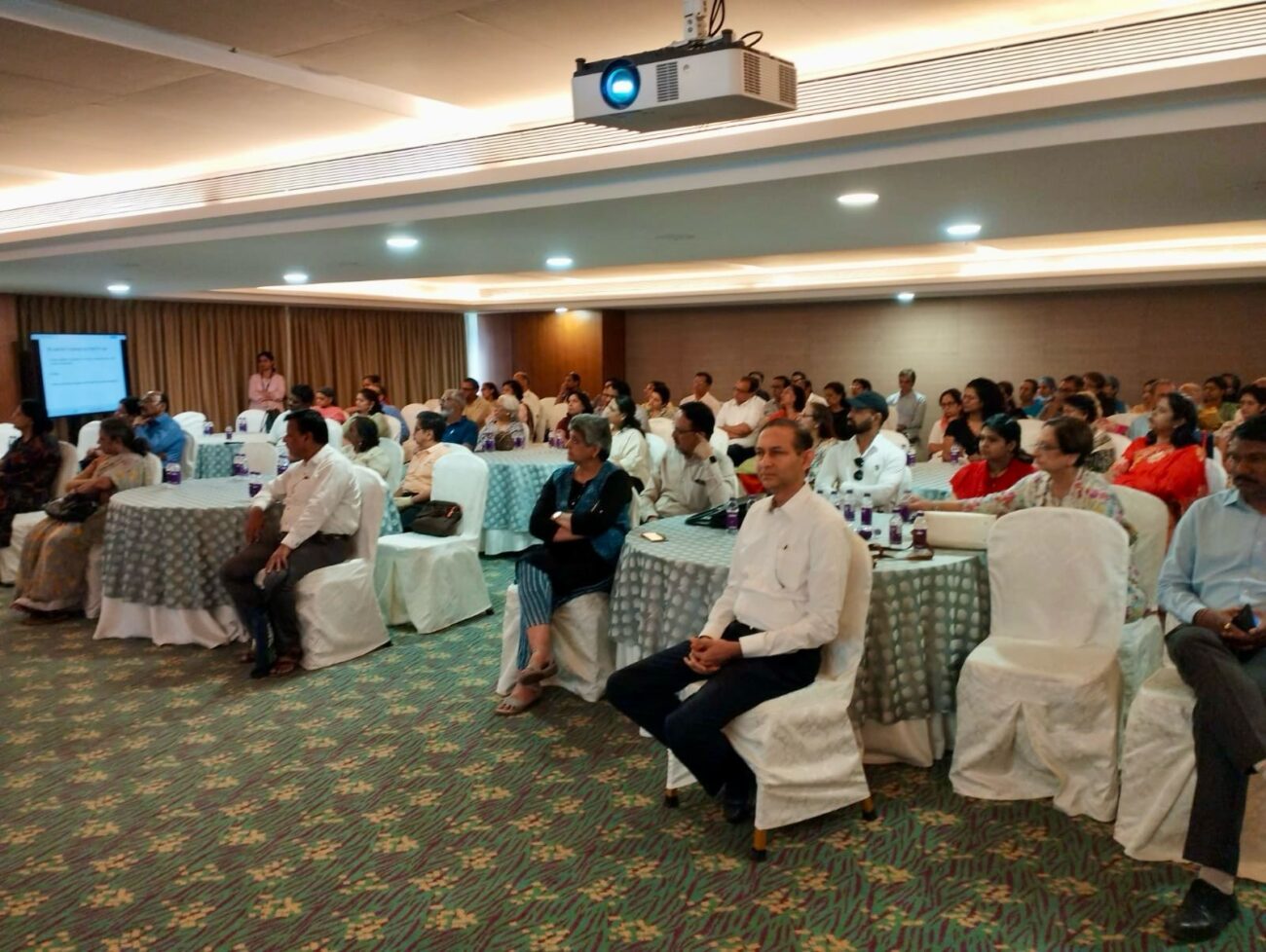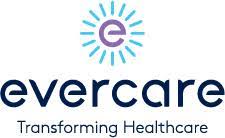Infection Control for Clinics and Hospitals in COVID Era
Based on currently available knowledge about the novel coronavirus, spread from person-to-person occurs most frequently among close contacts (within about 6 feet). This type of transmission occurs via respiratory droplets. Transmission of coronavirus occurs much
Based on currently available knowledge about the novel coronavirus, spread from person-to-person occurs most frequently among close contacts (within about 6 feet). This type of transmission occurs via respiratory droplets. Transmission of coronavirus occurs much more commonly through respiratory droplets than through fomites. Current evidence suggests that novel coronavirus may remain viable for hours to days on surfaces made from a variety of materials depending upon the type of surface, temperature and relative humidity. Cleaning of visibly dirty surfaces followed by disinfection is a best practice measure for the prevention of COVID-19 and other viral respiratory illnesses in households and community settings.
Cleaning is the removal of germs, dirt, and impurities from surfaces. Cleaning does not kill germs, but by removing them, it lowers their numbers and the risk of spreading infection.
Disinfection refers to the use of chemicals to kill germs and pathogens on surfaces, but it does not sterilize the surface. This process kills some germs and pathogens on a surface and lowers the risk of spreading infection. Disinfection should be done only for Inanimate Surfaces.
Aerosol Transmission: COVID-19 transmission by Airborne Transmission from person-to-person over long distances is unlikely and not yet proven; however precaution must be taken while performing all Aerosol Generating Procedures (AGP), which include Tracheal intubation, open suctioning, Nebulizer treatment, Sputum induction or Collection of Oropharyngeal & Nasopharyngeal swabs etc. This kind of transmission can be prevented by use of N95 Respirators.
Hand Hygiene Practices
Hand Hygiene is the single most effective method for Infection Prevention and Control in all Health Care Settings and at Home.
Duration of Hand Hygiene:
Soap and Water: At least 40-60 Seconds
Alcohol-Based Hand Rub (ABHR): At least 20 seconds.
Follow these five steps every time you follow the regime of hand hygiene:
- Wet your hands with clean, running water (warm or cold). Now, turn off the tap and apply soap.
- Lather your hands by rubbing them together with the soap. Lather the backs of your hands, between your fingers, and under your nails.
- Scrub your hands for at least 40 seconds. Need a timer? Hum the “Happy Birthday” song from beginning to end three times.
- Rinse your hands well under clean, running water.
- Dry your hands using a clean towel or air-dry them.
REMEMBER
Alcohol is an Antiseptic, which does not act effectively works when hands are visibly dirty
After BODY FLUID EXPOSURE, one must use SOAP and WATER.
Your 5 moments of Hand Hygiene- According to WHO”
There are 2 BEFORE Moments and 3 AFTER Moments
| BEFORE TOUCHING
A PATIENT |
WHEN? Clean your hands before touching a patient when approaching him/her.
WHY? To protect the patient against harmful germs carried on your hands. |
| BEFORE CLEAN/ ASEPTIC
PROCEDURE |
WHEN? Clean your hands immediately before performing a clean/aseptic procedure. eg; Central Line, cannulation, dressing,
Pleural Tap, Lumbar Puncture, ICD Insertion, intubation etc. WHY? To protect the patient against harmful germs, including the patient’s own, from entering his/her body. |
| AFTER BODY FLUID
EXPOSURE RISK |
WHEN? Clean your hands immediately after an exposure risk to body fluids (and after glove removal).
USE SOAP AND WATER IN THIS STEP, WHY? To protect yourself and the health-care environment from harmful patient germs. |
| AFTER TOUCHING A PATIENT | WHEN? Clean your hands after touching a patient and her/his immediate surroundings, when leaving the patient’s side.
WHY? To protect yourself and the health-care environment from harmful patient germs. |
| AFTER TOUCHING PATIENT SURROUNDINS | WHEN? Clean your hands after touching any object or furniture in the patient’s immediate surroundings, when leaving – even if the patient has not been touched
WHY? To protect yourself and the health-care environment from harmful patient germs |
Examples of Situations Where 5 Moments of Hand Hygiene Must Be Followed
| Moment-1 and 4: Before and After touching a patient | Before and After Taking pulse, BP, Inspection, Palpation, Percussion
Auscultation, Shaking hands, Patient Ambulation, Applying oxygen mask, Giving physiotherapy, Recording ECG, Use of gloves |
| Moment-2 and 3: Before and after aseptic procedure/body fluid exposure | Before and After, Oral/dental care, Aspiration of secretions or Accessing draining system, Skin lesion care, Wound dressing, Giving injection, Drawing blood or sterile fluid, Handling an invasive device (catheter, central or PICC line, ET tube), Clearing up urine, feces, vomit, Handling bandages, sanitary or baby napkin, Instilling eye drops, Moving from a contaminated body site to another body site during care of the same patient |
| Moment-5:
After touching patient surroundings |
After contact with Case File, Medical equipment in the immediate proximity of the patient, Bed or bed rail, Changing bed linen, Decanting a Urobag |
Risk Identification of Areas / Surfaces in the Clinic/ Hospital
Low-Risk Areas: Hospital wards other than the Isolation and ICUs, Kitchen, Administration area, Faculty Lounge, Department offices, corridors, All Staircases, CSSD, Laundry, Store, and Engineering sections, Reception and waiting areas.
Moderate Risk Area: Fever Clinic, ICUs, Dialysis, HDU, Emergency, Triage area, Lab, Labour Room, and enclosed areas like Lifts and Toilets.
High-Risk Areas: Nursing station of the Isolation, sample collection areas (high concentration of infectious particles while coughing, sneezing, gag reflex during nasopharyngeal and oropharyngeal sample collection). Isolation Toilet, PPE Doffing area, area for BioMedical Waste collection, segregation, and disposal. Isolation ward for SARI & other suspected COVID 19 patients who are mild or moderately sick.
High Touch Surfaces
| Bed Railings and Frames | Mobile, Keyboard, Mouse, Printers and Computer |
| Tray Table and Bedside Tables | Landline and Intercom Phones |
| Door Knobs and Handles | Edges of Curtains |
| I.V. Lines Poles | Lift Buttons and Hand Rails on Staircases |
| BP Cuffs and Stethoscopes | Walls near Toilets in Patient Rooms |
| Paediatric Weighing Balance | Side Railings of Stretchers |
| Arm Chairs | Nursing Station Bench and Benchtop |
General Policies
Maintain Maximum aeration and natural ventilation in the hospital and clinic building.
Keep doffing areas and BMW areas open. Open Doors by pushing with elbow or foot
If Doors need to be pulled by hands then perform hand hygiene. Whenever and wherever possible, use staircases without touching the railings. Use elbow, keys, etc to press lift buttons.
Housekeeping, Environmental Cleaning, and Disinfection Protocols
Environmental Cleaning and Disinfection: It is imperative to strictly abide by cleaning and disinfection protocols to combat the COVID-19 illness. The virus can potentially survive on environmental surfaces for several hours and even days. Premises and areas, equipment potentially contaminated with the virus must be cleaned before they can be reused. Transfer of microorganisms from environmental surfaces to patients and susceptible contacts is mostly via hand contact with the surface. Hand hygiene is important to minimize the impact of this transfer. Cleaning and disinfecting environmental surfaces is fundamental in reducing healthcare-associated infections.
General Advisory for Cleaning and Disinfection
- Never use a dry broom (Jhaadu) in Any Hospital or Clinic Area.
- Always move from Clean to Dirty Area.
- Higher to Lower Area and from Top to Bottom.
- The HCW or the House Keeping staff must wear appropriate PPE before starting cleaning or disinfection.
- Environmental Cleaning done best with either sodium hypochlorite or bleaching powder solution with 1% available chlorine.
- In general, all medium and high-risk areas of the hospital shall be cleaned with detergent (R2) and disinfected with 1% hypochlorite, and all low-risk areas shall be cleaned with detergent (R2) and disinfected with low-level disinfectant.
- Clean and disinfect all surfaces. This includes horizontal, vertical, and contact surfaces.
- Disinfect all “high-touch” surfaces daily and upon discharge or death.
- Cleaned surfaces should remain wet and air dry per the label’s instruction.
- Clean floors on a regular basis, when spills occur and when visibly soiled.
- Consider potential contamination of privacy curtains.
- Do not bring equipment carts into isolation rooms.
- Only leave the room when cleaning is completed.
- Remove PPE before leaving the patient environment.
- Immediately perform hand hygiene.
- Disinfect cleaning equipment and return to the cart.
Common disinfectants and chemicals for cleaning:
- Sodium Hypochlorite (1% solution): High-Level Disinfectant [100 ML 10% in 9.9 Litre water as a working solution].
- Taski R2: Liquid Detergent for surface cleaning dilution.
- Taski R6: Toilet cleaner.
- 70% Alcohol-based sanitizer: For surface cleaning.
- Use a 3 bucket system for cleaning floors.
Method/Procedure for Daily Mopping of Floors of Clinical Areas
Prepare a cleaning solution using detergent with water. Use the 3 bucket technique for mopping the floor, one bucket with plain water, and one with the detergent solution. First mop the area with the water and detergent solution using a figure of 8. After mopping, clean the mop with plain water and squeeze it. Repeat this procedure for the remaining area. Dip mop for 15-30sec in freshly prepared 1% hypochlorite solution. Mop area again using sodium hypochlorite 1% after the drying area. In between mopping if solution or water is dirty change it frequently. Mop the floor starting at the far corner of the room and work towards the door. Clean articles between cleaning.
Important Points to Follow
- Only do the wet mopping of the floors. Never use a dry broom
- Move from the Cleanest area to Dirty area
- Move from high-level surface to low-level surface
- Move from Top to Bottom, clean ceilings, followed by walls, followed by floors
- When cleaning the floor, begin at the end i.e. farthest from the door and move towards the door (in to out)
- Remove visibly soiled and dirty items like bandage etc before starting a cleaning
- The restroom should always be cleaned last
- Never shake the mops
- Change microfiber mop after each room, after isolation room and after cleaning the blood and bodily fluid spills
- Do not double dip the mops at one time
- Cover 120 sq ft i.e. 30 tiles of 2×2 ft each in one dip. Change the mop solution after 240 sq feet i.e. 60 tiles
- Follow the “8 Stroke Technique”
COVID-19 Biomedical Waste Management
Following needs to be kept in mind for BMW generated in COVID-19 suspected Isolation wards:
- Separate colour coded bins / bags / containers are placed in the ward and maintain proper segregation of waste as per BMWM Rules, 2016
- As a precaution double layered bags (using 2 bags) shall be used for collection of waste from COVID-19 isolation wards so as to ensure adequate strength and no-leaks
- BMW is collected separately prior to handing over the same CBWTF. Use a dedicated collection bin labelled as “COVID-19” to store COVID-19 waste.
- In addition to mandatory labelling, bags / containers used for collecting BMW from COVID- 19 ward, should be labelled as “COVID-19 Waste”.
- Separate record is maintained for COVID-19 BMW
- Dedicated trolleys and collection bins are used in COVID-19 isolation wards. A label “COVID-19 Waste” shall be pasted on these items also.
- The (inner and outer) surface of containers / bins / trolleys used for storage of COVID-19 waste should be disinfected with 1% sodium hypochlorite solution daily.
- The HCW, Housekeeping staff handling the COVID-19 BMW shall wear appropriate PPE at all times.
Proper Use of Mask
Health care workers should:
- wear a medical mask while providing care to the patient
- Use a particulate respirator N95 (NIOSH certified) or FFP 2/3 or equivalent, when performing aerosol generating procedures
- Place mask carefully to cover mouth and nose and tie securely to minimize any gaps between the face and the mask
- While in use, avoid touching the mask and remove the mask by using appropriate technique (i.e. do not touch the front but remove the lace from behind)
- After removal or whenever you inadvertently touch a used mask, clean hands by using an alcohol-based hand rub or soap and water
- Replace masks with a new clean, dry mask as soon as they become damp/humid
- Do not re-use single-use face masks
- Discard single-use masks after each use and dispose them of immediately upon removal
Kitchen
Dishes and eating utensils used by a patient with known or suspected infection
• No special precautions other than standard precautions
• Wear gloves when handling patient trays, dishes and utensils
Cleaning and Disinfection after Discharge/ Transfer
- Clean and disinfect all surfaces that were in contact with patient or may have become contaminated during patient care
- Do not spray or fog occupied or unoccupied rooms with disinfectant – potentially dangerous practice that has no proven benefits
Decontamination of ambulances
- Decontamination of ambulance needs to be performed every time a suspect/confirmed case is transported in the ambulance. The following procedure must be followed while decontaminating the ambulance: Gloves and N-95 masks are recommended for sanitation staff cleaning the ambulance.
- Disinfect (damp wipe) all horizontal, vertical and contact surfaces with a cotton cloth saturated (or microfiber) with a 1% sodium hypochlorite solution. These surfaces include, but are not limited to stretcher, Bed rails, Infusion pumps, IV poles/Hanging IV poles, Monitor cables, telephone, Countertops, sharps container. Spot clean walls (when visually soiled) with disinfectant-detergent and windows with glass cleaner. Allow contact time of 30 minutes and allow air dry.
- Damp mop floor with 1% sodium hypochlorite disinfectant.
- Discard disposable items and Infectious waste in a Bio/Hazard bag. The interior is sprayed with 1% sodium hypochlorite. The bag is tied and exterior is also decontaminated with 1% sodium hypochlorite and should be given to the hospitals to dispose of according to their policy.
- Change cotton mop water containing disinfectant after each cleaning cycle.
- Do not place cleaning cloth back into the disinfectant solution after using it to wipe a surface.
- Remove gloves and wash hands.
Administrative Controls
- Provision of adequate training for healthcare workers
- Ensuring adequate patient-to-staff ratio
- Establishing a surveillance process for acute respiratory infections potentially caused by COVID-19 among HCWs
- Ensuring that HCWs and the public understand the importance of promptly seeking medical care
- Monitoring healthcare workers compliance with standard precautions and providing mechanisms for improvement as needed.
Implementation of good infection control practices help to minimize the risk of spread of infection to patients and staff.





